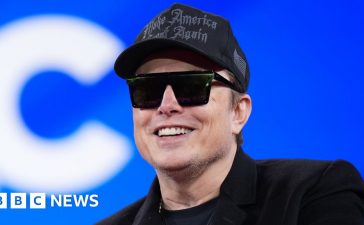As boards grapple with the opportunity and risk of generative artificial intelligence, companies are leaning into a new role: the chief AI officer.
The number of companies with a designated head of AI position has almost tripled globally in the past five years, according to social network LinkedIn. Fawad Bajwa, AI lead at recruiters Russell Reynolds Associates, has “seen the landscape shift” since the launch of ChatGPT.
The position was further elevated last month, when the White House announced federal agencies were required to designate chief AI officers “to ensure accountability, leadership, and oversight” of the technology. Yet the role’s responsibilities are still being worked out — and with the rise and fall of job titles now a constant in corporate life, it may not stay relevant forever.
CAIOs oversee the deployment of AI and generative AI within an organisation: improving workforce efficiency, identifying new revenue streams, and mitigating ethical and security risks. The role requires a “deep understanding of AI tech, machine learning, data science and analytics,” says David Mathison, who founded the first Chief AI Officer Summit last year. Yet candidates also “need to understand legal” and change management well; many come from leadership roles in data, risk management and compliance.
Their rise comes amid a fierce battle for AI expertise more broadly, with even relatively junior engineers at cutting-edge companies commanding seven-figure salaries.
“It has become more difficult to recruit than ever before,” Bajwa says of the chief AI officer role. “There is a small pool of talent that is being [sought] by a lot more people.” Yet CAIOs are not necessarily recruited from the same pool as those in bleeding-edge technology — nor do they command the salary heights.

Tom Hurd, chief executive of Zeki, which tracks science hires, says technologists typically come from university AI labs, then work with highly resourced Big Tech companies to turn ideas into products, informed by “deep knowledge and intense interest in how to further develop AI”. CAIOs, on the other hand, tend to have backgrounds in computer science and business administration. “They lead on transformation and outreach within and outside a company . . . It’s more about governance, socialising of the tech,” Hurd says.
Ryan Bulkoski, global head of the artificial intelligence, data and analytics practice at executive recruiters Heidrick & Struggles agrees. “There’s a whole lot more admin [and] meetings involved, the closer you get to the business.” Specialists tend not to leave research-oriented areas for a business role, he says. A CAIO role offers exposure to the corporate side of technology, but takes “away from publishing, applied research and consistently being on the bleeding edge”.
Lan Guan, CAIO at Accenture, says her job is “multidisciplinary, requiring a blend of robust technical knowledge and sharp business insight across fields [as diverse] as AI and machine learning, computer science, statistics, data analytics, ethics, regulatory compliance, and industry-specific expertise”. Technology, she estimates, is “probably only 35-40 per cent” of the job — she leads Accenture’s Center for Advanced AI, which develops products for clients. “Having the strategy background and ability to manage the uncertainty, [as well as] to address the potential trade-offs is super important.”
The focus means CAIOs are sought not just in tech but across industries, and particularly among finance, healthcare and consumer groups, says Bajwa, although the oil and gas, and heavy industry, sectors are lagging behind.
Some CAIOs report to the chief executive or chief operating officer; others to the chief tech officer, like Daniel Hulme, who took the role at WPP after his company Satalia, which creates AI products and consulting services, was bought by the advertising group almost three years ago.
As part of a dual role continuing to lead Satalia, his job is to identify ways AI can help create content for WPP. One initiative trains the technology on client and third-party data — including elements such as tone of voice — to predict how consumers will receive campaigns. Hulme works closely with WPP’s chief technology officer, but makes the case for a dedicated AI role to keep on top of its rapid advancement. “It requires somebody to make sure they stay at the forefront, to understand deployment, to enhance offerings to clients and the workforce . . . to see how they can enhance human creativity.”
Accenture’s Guan says part of the role is evangelising for the technology, dispelling some of the “fear and anxiety” about AI. She oversees rollout of workshops and demonstrations, for example showing financial analysts how to use AI to generate balance sheets.
“I am clearly an AI optimist,” she says. “It’s super important for people to try — you can’t just stand on the side lines and watch people cook . . . This experimentation is super important.” So is identifying influencers in the organisation who “are actively talking about the benefits and lessons learnt. Amplifying the storytelling, bringing the technology to life. This is a culture change, not just a tech conversation — it’s a people conversation.”
Jeff Boudreau, CAIO at Dell, also says his role is about reassurance. Some staff feel especially vulnerable, worrying their jobs will disappear. Hulme says he encourages employees to develop expertise so that they can ask “better questions of AI”, seeing it not as a threat to jobs but a help to workers. “The thing I talk about with teams is the roles that haven’t been created yet.” Underpinning this, however, is increasing efficiency. “I joke we’re moving from chief AI to chief productivity officer,” says Boudreau.
Practitioners must also manage expectations, however. “When I talk to some board members and Exco [executive committee] members in other companies, their aspirations and what the tech can do are not aligned. That’s why the [CAIO] voice is so important — to educate them.”

And the job is not just evangelising but managing the drawbacks of the technology, including legal compliance, and risk. “We constantly revisit [ethics],” says Guan, as well as “misinformation [and] confidentiality”.
Is the CAIO role here to stay? It is one of several positions to have increased in demand: chief revenue and chief growth officers have also grown popular in recent years. But not all senior roles stick around. In the wake of Black Lives Matter protests, many companies rushed to recruit chief diversity officers, but political backlash has seen dwindling support for the role.
Harrick Vin, chief technology officer at Tata Consultancy Services, does not believe a separate CAIO role is needed. “It isn’t about having one person and one role. Every function — whether sales, marketing, or software engineering is getting redefined leveraging AI.” Like innovation, AI is “everyone’s business. One person can’t be an expert.”
However, there needs to be a point person, whatever their title, says Vin. “The actual transformation needs to be decentralised but the operation needs to be centralised. This is not a one-time transformation. The machines will get better and better. As they become more intelligent, more avenues become open. It’s like driving continuous transformation.”
According to Gartner, the research firm, responsibility for AI generally still lies largely in the domain of the chief technology officer and chief information officer, which respectively take the lead on AI initiatives in 23 per cent of organisations. Foundry records that only 21 per cent of companies have plans to create a CAIO position, although that sentiment is higher among healthcare (35 per cent) and education (33 per cent) respondents.
CAIO summit founder Mathison thinks the role will stay relevant, adapting with the technology and becoming available to smaller companies through part-time fractional positions. “That evens the playing field,” he says.
However, Boudreau believes the job has a shelf life. “I do think if I’ve done my job well, the role should go.”











